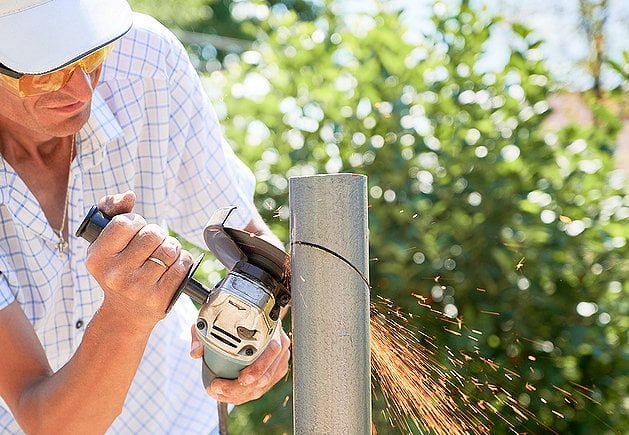Most Dangerous Electrical Tools
♦ What are the most dangerous tools an electronic security installer uses?
A: Grinding or cutting tools used on metal, masonry or wooden surfaces – including battery powered multi-tools – are potentially the most dangerous. These devices are capable of doing installers permanent injury.
If you do use these tools, one of the most important things to bear in mind is the importance of the guard mechanism. This guard is designed to keep vulnerable parts of your body – like your fingers – away from the cutting or grinding surfaces of the tool. It goes without saying that human flesh is significantly less robust than timber, steel and concrete.
There are 3 primary types of guard, the fixed guard, the adjustable guard and the interlocked guard. Fixed guards encase moving parts entirely and they aren’t meant to be removed. This makes them very safe. Meanwhile, interlock guards are hooked up to the tool’s power source and their removal renders its mechanism inoperable. Lastly there are self-adjusting guards. These may move for certain types of work, or for servicing, but they don’t offer the high levels of protection you’d get from a fixed guard.
You should never operate a tool if its guard is not in place and it’s important to bear in mind that hand-held tools never have the same levels guard protection bench mounted units do. Regardless of the guard set-up of a tool, you should always wear face/eye protection. Guards are also important for cutting tools – a folding utility knife with a locking mechanism is safer than a cheap cutting tool which may open through vibration or wear.
If you move away from 12V cabling, then the most dangerous tool is any piece of uninsulated metal in your hand unless power is pulled from 240V AC equipment, or the mains circuit is switched off. Take care around battery terminals, too, especially larger arrays.
There are other dangers security installers face they may not think of. Unstable ladders, poorly supported ceilings, heavy objects falling on building sites, poisonous fumes from PVC being heated for bending, poor AC electrical installations, sharp tools in the bottom of toolbags that are badly designed, and plenty more.
Develop strict safety procedures, carry PLBs in remote locations or when working alone, and ensure every tech in your organisation has first aid skills to provide immediate medical response in the event of electrocution, falls, snake and spider bites, and other injuries – not only for workmates, but for themselves.
#SEN #SENnews #security #electronics











